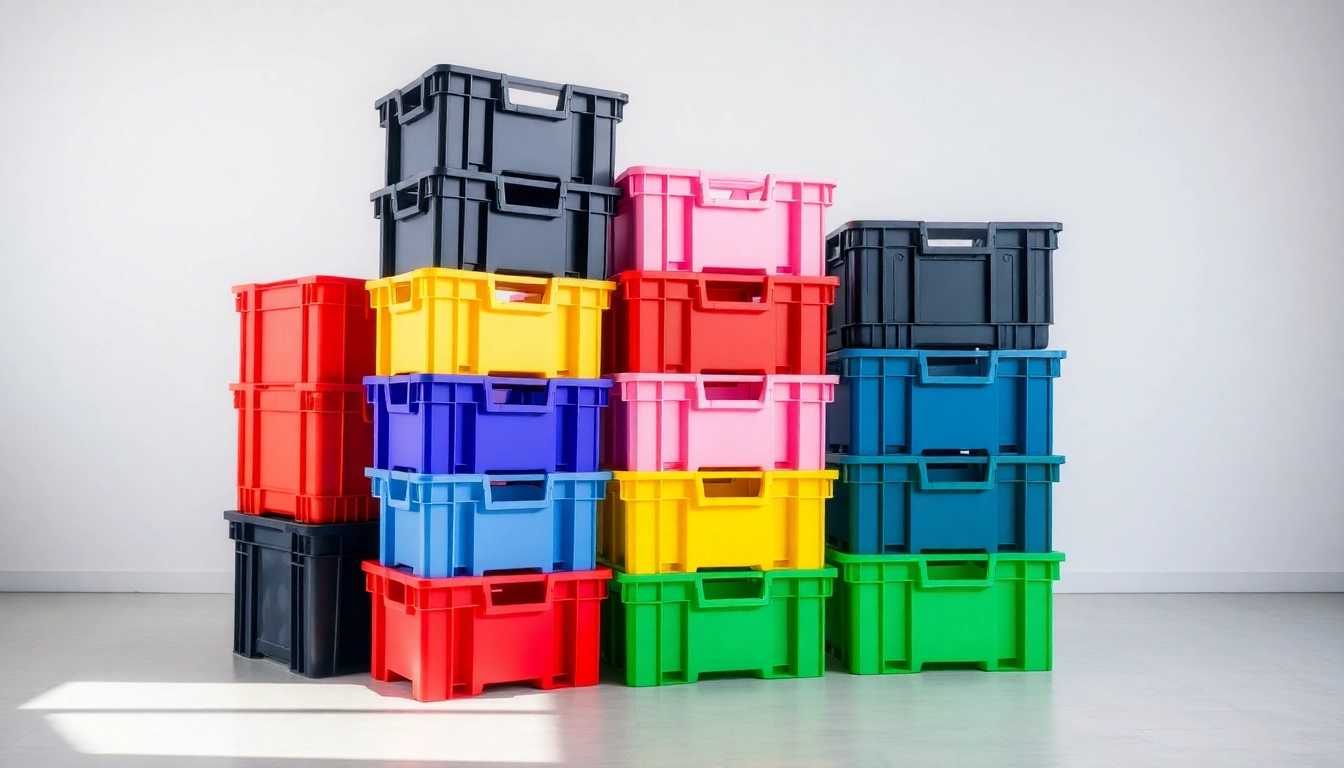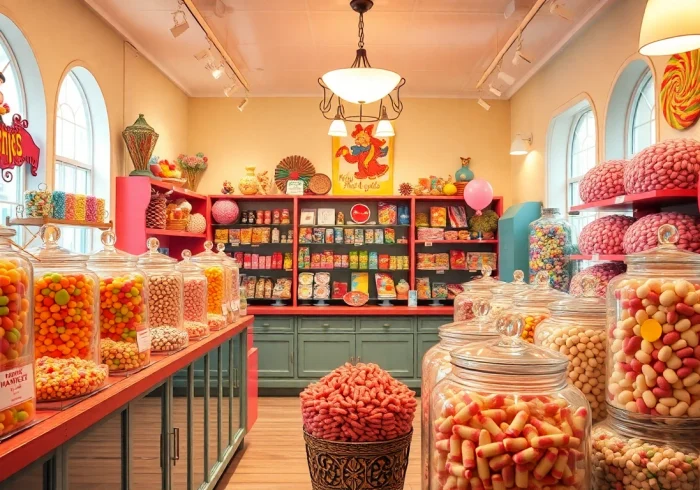Understanding Moving Crates
Moving can often feel chaotic, and one of the most integral components of a successful move is having the right packing supplies. One innovative solution gaining popularity is moving crates. These sturdy, reusable containers are designed for efficient packing, transportation, and storage, making them an attractive choice for anyone planning a move—be it a residential shift or a commercial relocation.
What are Moving Crates?
Moving crates, often crafted from durable plastic, serve as versatile containers that are ideal for transporting a variety of items—everything from household goods to office equipment. Unlike traditional cardboard boxes, moving crates offer enhanced durability, which means they can withstand the rigors of relocation without compromising the safety of their contents. Their robust design allows for stacking and minimizes the risk of damage during transit.
Types of Moving Crates Available
When selecting the right moving crate, it’s essential to consider the different types available in the market:
- Standard Moving Crates: These are typically rectangular and designed for general-purpose use. They often come in various sizes to accommodate items ranging from books to larger household goods.
- Specialty Crates: These are tailored for specific items, such as wardrobe crates (with a bar for hanging clothes), dish crates (with padded compartments), and electronic equipment crates (with custom inserts for fragile technology).
- Stackable Crates: Ideal for optimizing space during transport, these crates can be easily stacked upon one another, making loading and unloading more efficient.
- Eco-Friendly Crates: With sustainability in mind, some companies offer biodegradable or recycled moving crates, which minimize environmental impact and are becoming a preferred option for eco-conscious consumers.
Benefits of Choosing Moving Crates
Investing in moving crates over traditional cardboard boxes can afford numerous benefits, including:
- Durability: Built to last, moving crates can endure heavy loads and rough handling without tearing or collapsing.
- Water Resistance: Unlike cardboard, which can weaken when wet, many moving crates are waterproof, providing extra protection to your belongings.
- Reusability: After your move, these crates can be reused for storage or future relocations, promoting cost-effectiveness over time.
- Time Efficiency: The ease of packing and unpacking with pre-handled crates can save time, allowing for smoother transitions between locations.
How to Choose the Right Moving Crates
Factors to Consider When Selecting Moving Crates
When it comes to choosing the right moving crates, several factors should be assessed to ensure they meet your specific needs:
- Size: Consider the items you will be packing. Ensure the crates you select can accommodate both larger and smaller items without compromising space.
- Weight Capacity: Each crate comes with a specified weight limit. Choose crates that can support the weight of your heaviest items to prevent accidents or damage.
- Handling Features: Crates with built-in handles or those designed for easy lifting can significantly streamline the moving process.
- Transport Requirements: If you’re using a moving truck or another vehicle, double-check that the crates can fit and stack adequately for efficient transportation.
Size and Weight Considerations for Moving Crates
The sizes of moving crates can vary widely, ranging from small boxes for books to large containers for kitchen appliances. Choosing the appropriate size and understanding the weight distribution is key to effective packing:
Always aim to distribute the weight evenly across crates. Overloading one crate while others remain underfilled can lead to difficulty maneuvering and may risk damage or injury. Utilizing a mix of crate sizes can often yield the best result, combining large and small for efficient, organized packing.
Comparing Rental Options for Moving Crates
One of the most common questions when considering moving crates is whether to buy or rent. Many providers offer rental services that allow you to secure crates for the duration of your move. Let’s weigh the pros and cons:
- Rental Pros:
- Cost-effective for a one-time move.
- No storage concerns post-move.
- Convenient delivery and pickup services are often included.
- Rental Cons:
- Restrictions on use duration.
- Less control over the number of crates available.
- Purchase Pros:
- Long-term investment for future moves.
- Complete control over your packing supplies.
- Purchase Cons:
- Higher upfront cost.
- Need for storage space.
Preparing for Your Move with Moving Crates
Packing Tips for Effective Use of Moving Crates
Packing can be one of the most overwhelming aspects of moving. However, using moving crates can alleviate some of that stress. Here are some tips for effective packing:
- Pack Heaviest Items First: Place the heaviest items at the bottom of the crate for proper weight distribution.
- Fill Crates Completely: Leaving spaces can lead to shifting during transport. Use soft items like blankets, clothing, or packing paper to fill in gaps.
- Group Similar Items: Keep items from the same room together, making unpacking more organized.
- Secure Fragile Items: Wrap delicate items in bubble wrap or packing paper and ensure they are packed together effectively.
Labeling and Organizing Your Moving Crates
Labeling your moving crates can significantly streamline the unpacking process. Here’s how to effectively label your crates:
- Use Color-Coded Labels: Assign colors to rooms or categories (e.g., red for kitchen, blue for living room) to easily identify where each crate belongs.
- Numbering System: Implement a numbering system and keep a corresponding list to detail what items are in each crate. This helps track items and ensures nothing is left behind.
- Identify Fragile Items: Clearly mark crates that contain fragile items to ensure they are handled with extra care.
Common Mistakes to Avoid with Moving Crates
While moving crates can make your relocation smoother, certain common pitfalls can reduce their effectiveness:
- Overpacking Crates: Excessive weight can cause crates to break or buckle. Pay attention to weight limits.
- Neglecting to Label Crates: Unlabeled crates can lead to confusion during unpacking, causing unnecessary delays.
- Forgetting About the Inverse Relationship: The larger the crate, the heavier items should be used. Smaller crates should house lighter items to avoid strain.
Cost-Effectiveness of Moving Crates
Comparing Cost: Moving Crates vs. Traditional Boxes
While it may seem that cardboard boxes are a cheaper option initially, a detailed cost analysis reveals that moving crates offer better long-term value:
- Durability: Moving crates can withstand multiple uses, while cardboard boxes may need replacement frequently.
- Protection: Moving crates offer improved protection from damage, reducing the risk of replacing broken items.
- Savings Over Time: If you move often, the cost of purchasing moving crates can be offset by their reusability.
Long-term Savings with Reusable Moving Crates
When considering the costs of traditional moving materials like cardboard, many overlook the extensive waste generated. Investing in reusable moving crates can spark immediate savings and leverage environmental benefits:
Rather than collecting used boxes from local retailers—often leading to various sizes and conditions—securing a set of quality crates offers a consistent and reliable solution that can accompany you through multiple moves. Spread over several moves, the price per use diminishes, solidifying a solid financial decision.
Rental vs. Purchase Expenses for Moving Crates
In making the decision between renting and buying moving crates, consider the following:
- Rental Costs: Typically, rental companies charge based on the type and number of crates, duration, and delivery costs.
- Purchase Costs: Although the upfront cost may be higher, if you move frequently, the overall expenditure balances over time. Additionally, many brands offer bulk purchasing discounts that can lower costs.
Evaluate the frequency of moves, the potential for crate reuse, and the number of items to transport while weighing these options.
Sustainability and the Future of Moving Crates
The Environmental Impact of Moving Crates
As the world becomes more environmentally conscious, the sustainability of moving supplies is paramount. Traditional cardboard boxes contribute heavily to waste, as they are often thrown away after a single use. Conversely, moving crates offer a more sustainable solution:
Being reusable, moving crates help reduce the amount of new materials needed. Additionally, many manufacturers focus on creating crates from recycled materials, enhancing their environmental benefits.
How Moving Crates Support Eco-Friendly Moving Practices
Choosing moving crates aligns with eco-friendly practices in several ways:
- Reduced Waste: By utilizing crates multiple times, you are lessening the overall waste generated from one-time-use boxes.
- Resource Efficiency: Production processes for moving crates have significantly evolved, leading to lower carbon footprints in manufacturing compared to traditional boxes.
- Promoting a Circular Economy: By renting and subsequently returning moving crates, companies contribute to the idea of shared use, assisting in reducing the demand for new materials.
Innovations in Moving Crates for a Sustainable Future
As technology advances, more companies are innovating their moving crates to enhance functionality and sustainability. Some exciting innovations include:
- Smart Crates: These incorporate RFID technology that allows tracking through the entire moving process, ensuring nothing gets lost.
- Foldable Designs: Crates that can be folded when empty save space and make transport more efficient.
- Biodegradable Options: Environmentally friendly materials that decompose over time are being incorporated, especially for clients who may not prefer traditional plastic options.



